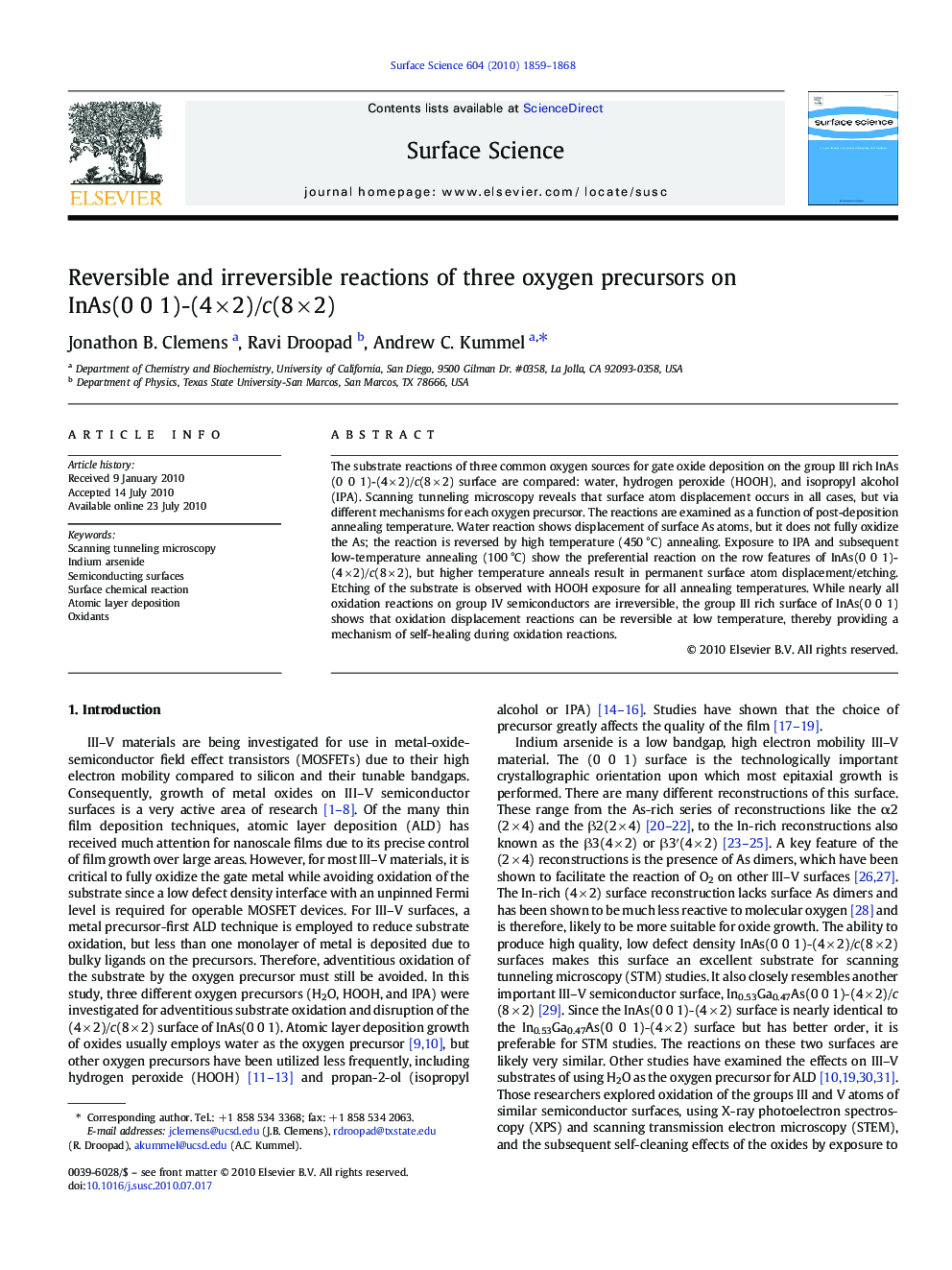| Article ID | Journal | Published Year | Pages | File Type |
|---|---|---|---|---|
| 5423493 | Surface Science | 2010 | 10 Pages |
Abstract
The substrate reactions of three common oxygen sources for gate oxide deposition on the group III rich InAs(0 0 1)-(4 Ã 2)/c(8 Ã 2) surface are compared: water, hydrogen peroxide (HOOH), and isopropyl alcohol (IPA). Scanning tunneling microscopy reveals that surface atom displacement occurs in all cases, but via different mechanisms for each oxygen precursor. The reactions are examined as a function of post-deposition annealing temperature. Water reaction shows displacement of surface As atoms, but it does not fully oxidize the As; the reaction is reversed by high temperature (450 °C) annealing. Exposure to IPA and subsequent low-temperature annealing (100 °C) show the preferential reaction on the row features of InAs(0 0 1)-(4 Ã 2)/c(8 Ã 2), but higher temperature anneals result in permanent surface atom displacement/etching. Etching of the substrate is observed with HOOH exposure for all annealing temperatures. While nearly all oxidation reactions on group IV semiconductors are irreversible, the group III rich surface of InAs(0 0 1) shows that oxidation displacement reactions can be reversible at low temperature, thereby providing a mechanism of self-healing during oxidation reactions.
Keywords
Related Topics
Physical Sciences and Engineering
Chemistry
Physical and Theoretical Chemistry
Authors
Jonathon B. Clemens, Ravi Droopad, Andrew C. Kummel,
